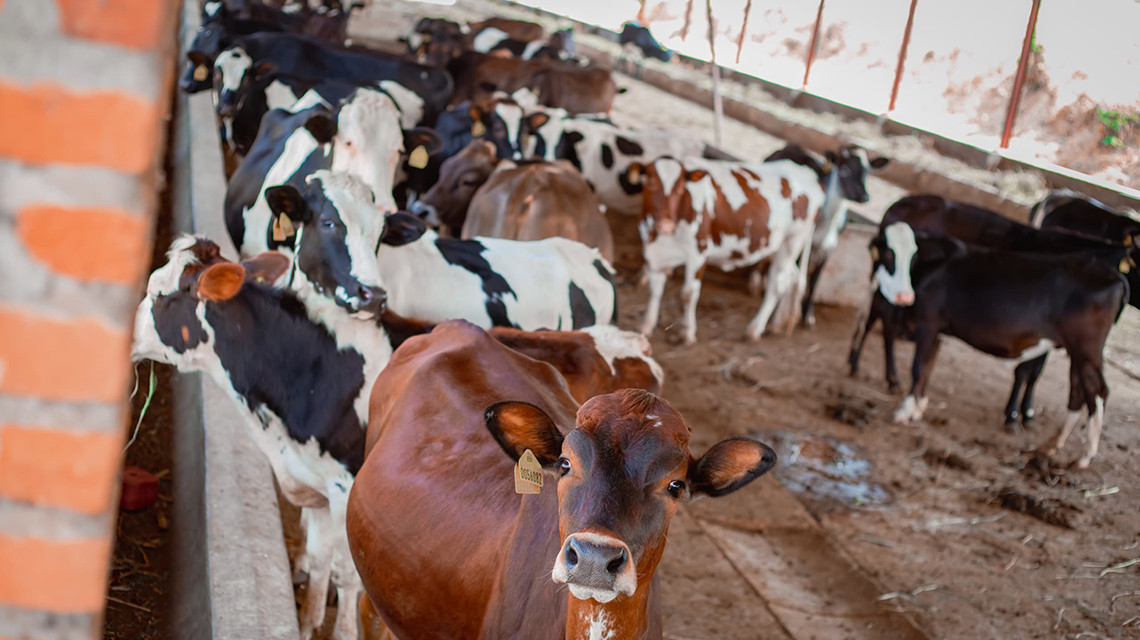Burundi is preventing disease outbreaks in livestock and breeding hardier cattle capable of greater milk production with the support of the IAEA. Staff trained by the IAEA at fully equipped national laboratories in Burundi are now using nuclear and related techniques to process significantly more artificial insemination and diagnostic samples, helping to ensure healthy and high-producing livestock.
Burundi's livestock population is at risk from animal and zoonotic diseases, such as foot and mouth disease, East Coast fever and bovine tuberculosis. The IAEA through its joint FAO/IAEA Centre of Nuclear Techniques in Food and Agriculture has upgraded equipment at the National Veterinary Laboratory and the National Center for Artificial Insemination (NCAIGI) in Burundi and trained the national staff at NCAIGI to diagnose animal diseases using PCR tests. The National Veterinary Laboratory is now able to process 10 000 pathogen samples each year - more than a threefold increase from its previous capacity.
This autumn, five IAEA fellows from Burundi are learning techniques related to transboundary animal diseases at institutions in Kenya, Malawi and Tunisia. By detecting contagious animal diseases early on, scientists can help to prevent the spread of outbreaks that affect large numbers of cattle. With IAEA support, trained laboratory staff detected a Rift Valley fever outbreak in Burundi in December 2021. More than 900 clinical cases were identified, with 560 cattle reported dead. Laboratory technicians were able to diagnose the disease accurately, which enabled decision makers to limit the spread of Rift Valley fever through monitoring and the vaccination of more than 700 000 cattle.
"Before I was trained, I could not provide reliable results. With the new knowledge, I feel empowered, and it is much easier for me to perform advanced testing. Farmers are now bringing their samples to check for various diseases, such as brucellosis, when they are planning to sell animals, and it adds value to the price when it turns out to be a negative result. For animal movement purposes, we are getting more than 500 samples per month from various development partners, and we conduct analyses for priority diseases," explained Mbazumutima Magnifique, a laboratory technician at the National Veterinary Laboratory.

Breeding from bulls with superior genetic qualities has boosted milk production in Burundi. (Photo: C. Nkundwanayo/National Veterinary Laboratory)
By building capacity in artificial insemination services in Burundi, the IAEA has helped farmers to breed dairy cows with higher genetic merit for milk production and adaptability to the environment. Bulls with superior genetic qualities are identified and selected for breeding purposes. Breeding from these bulls can increase daily average milk production in the resulting offspring from 1.4 litres to 1.8 - 6.5 litres, according to a study by the University of Burundi.
"The livestock sector is a pillar of the food system in Burundi and a significant contributor to poverty reduction, food security and agricultural development. Since 2018, through the support of the IAEA technical cooperation programme, Burundi has developed its capacity significantly in animal disease diagnosis and artificial insemination, which has contributed to the improvement of the livestock sector," said Shaukat Abdulrazak, Director of the IAEA Department of Technical Cooperation's Division for Africa.
Thanks to IAEA training at the NCAIGI, there are now many qualified artificial insemination practitioners, who are now providing their services to an estimated 25 000 farmers. In 2022, the number of inseminations conducted was 15 764 - nearly double from that of 2021. These improved services resulted in the births of 3697 calves, helping to increase milk production to reach national needs.
Following initial IAEA support, Burundi has begun sharing its knowledge with neighbouring countries. The National Veterinary Laboratory is using its expertise to train staff from the Democratic Republic of Congo and now receives more than 40 students each year.
This article covers one of the many topics that will be discussed during the 2024 Ministerial Conference on Nuclear Science, Technology and Applications and the Technical Cooperation Programme






